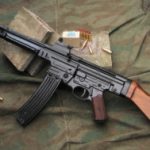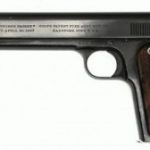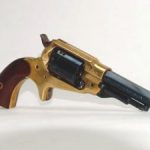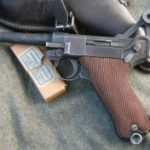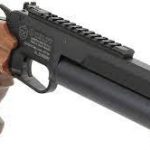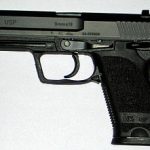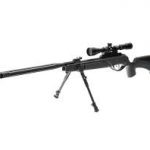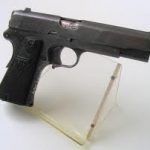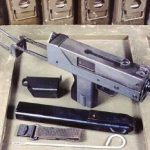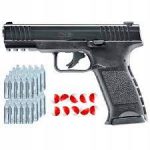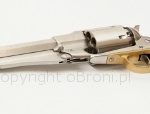Mauser 98k
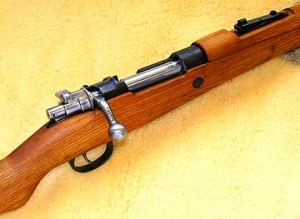
Początki tego jakże wspaniałego karabinu sięgają roku 1908. Pierwsza Wojna Światowa i nieodłączny towarzysz niemieckich żołnierzy Gewehr 98 – pozostawił wiele do życzenia. Ale to właśnie on, jako starszy brat, zainspirował konstruktorów Mausera do dalszych kroków i stworzenia Mausera 98k.Główną modernizacją na lepsze, była zmiana lufy broni na nową, krótszą o całe 14cm, co przyczyniło się nie tylko do polepszenia celności, ale i wygody jego użytkowania przez żołnierza. Dzięki temu, już z wejścia dorobił się przydomku „kurz” od swoich użytkowników, co najzwyczajniej oznaczało „krótki”. Spełniał tym samym funkcje indywidualnej broni powtarzalnej. Zastosowano w nim zamek czterotaktowy, ślizgowo-obrotowy. Ryglowanie zamka odbywa się za pomocą dwóch położonych obok siebie rygli. Początkowo karabin produkowany jedynie z nastawieniem na eksport do innych krajów Europy, jednakże późniejsze czynniki i niezawodność tej konstrukcji spowodowały, iż stał się podstawową bronią żołnierzy niemieckich. Już w roku 1935 został oficjalnie przyjęty do uzbrojenia, jako znany nam Mauser 98k. Zasilanie ze stałego, dwurzędowego magazynka pudełkowego o pojemności pięciu naboi w zupełności wystarczało do przeprowadzenia ataku. Użyto tu ogólnie powszechnego naboju karabinowego marki Mauser 7,92 × 57mm. Prędkość początkowa pocisku wynosiła od 755 do 845m/s, a szybkostrzelność praktyczna wahała się na poziomie ok. 10 strzałów na minutę. Donośność maksymalna wynosiła ok. 4000m, chodź przeciętnie oddawany celny strzał padał z odległości nie większej niż 1300 metrów. Co ciekawe, egzemplarze o wyjątkowej celności, które trafiały się jak 1 do 800, były odkładane dla specjalnych modeli „snajperskich” produkowanych wybiórczo dla strzelców wyborowych, w tym snajperów. Dodatkowo konstruktorzy dodali do karabinu „Schiessbecher”. Dzięki temu, na zakończeniu lufy można było zamontować nasadkę do miotania granatów, będących dodatkową opcją taktyki walki.
Kolba tego karabinu przeżyła swoistą drzewną „ewolucję”. W zależności od stanu budżetu Rzeszy Adolfa Hitlera, produkowano je z wysokogatunkowego drewna orzechowego, bukowego, dębowego, a skończywszy na najtańszej sklejce, która mocno pogorszyła walory tej broni. Owa sklejka wymusiła zmianę konstrukcji kolby, która zamiast płaskiej stopki otrzymała tłoczony z blachy tandetny trzewik. Przedni bączek zastąpiła opaska z blachy, a karabiny przestały być w większości wyposażane w bagnety i wyciory, niezbędne do konserwacji i prawidłowego działania przy dłuższej eksploatacji. Coraz więcej części karabinu było tłoczonych, w przeciwieństwie do wcześniejszego ich frezowania. Czasy, jakie następowały wraz z wojną, niosły za sobą wiele uproszczeń broni, w tym także i tej. Kolejnym przykładem tego zabiegu jest to, że egzemplarze wykonane w 1945 roku często posiadały stały celownik przystrzelany na odległość 100m i skrócone łoże (oszczędność drewna), nadmieniając, że niektóre nie posiadały żadnego pokrycia zabezpieczającego przed korozją i uszkodzeniami zewnętrznymi. To wszystko może wzbudzić w nas wątpliwości; zadając sobie pytanie: „Czy to naprawdę jedna z lepszych broni tamtego czasu?” Muszę odpowiedzieć, że tak! I niech myślą przewodnią nie będzie moje osobiste zdanie, lecz to, iż pomimo wprowadzenia w uzbrojenie karabinów samopowtarzalnych i automatycznych, Kar98k do końca wojny pozostał przepisowym karabinem Wehrmachtu. Służył bez końca, nawet w beznadziejnych warunkach Stalingradu był ostoją zmarzniętych chłopców Hitlera. Zdobyty przez powstańców Warszawy i partyzantów stanowił nieodzowny skarb, wprowadzając w grupach radość i dumę z posiadanej broni.
Po zakończeniu II wojny światowej i przegranej wojsk niemieckich, konstrukcje Kar98k trafiły do arsenałów wielu państw, nie tylko Europejskich. Duża ilość tego sprzętu była używana do lat 70. między innymi w Izraelu, chodź większość izraelskich Mauserów 98k została przebudowana na praktyczniejszą wersję, kalibru 7, 62 × 51mm. Dziś marzenie wielu kolekcjonerów, weteran historii!
